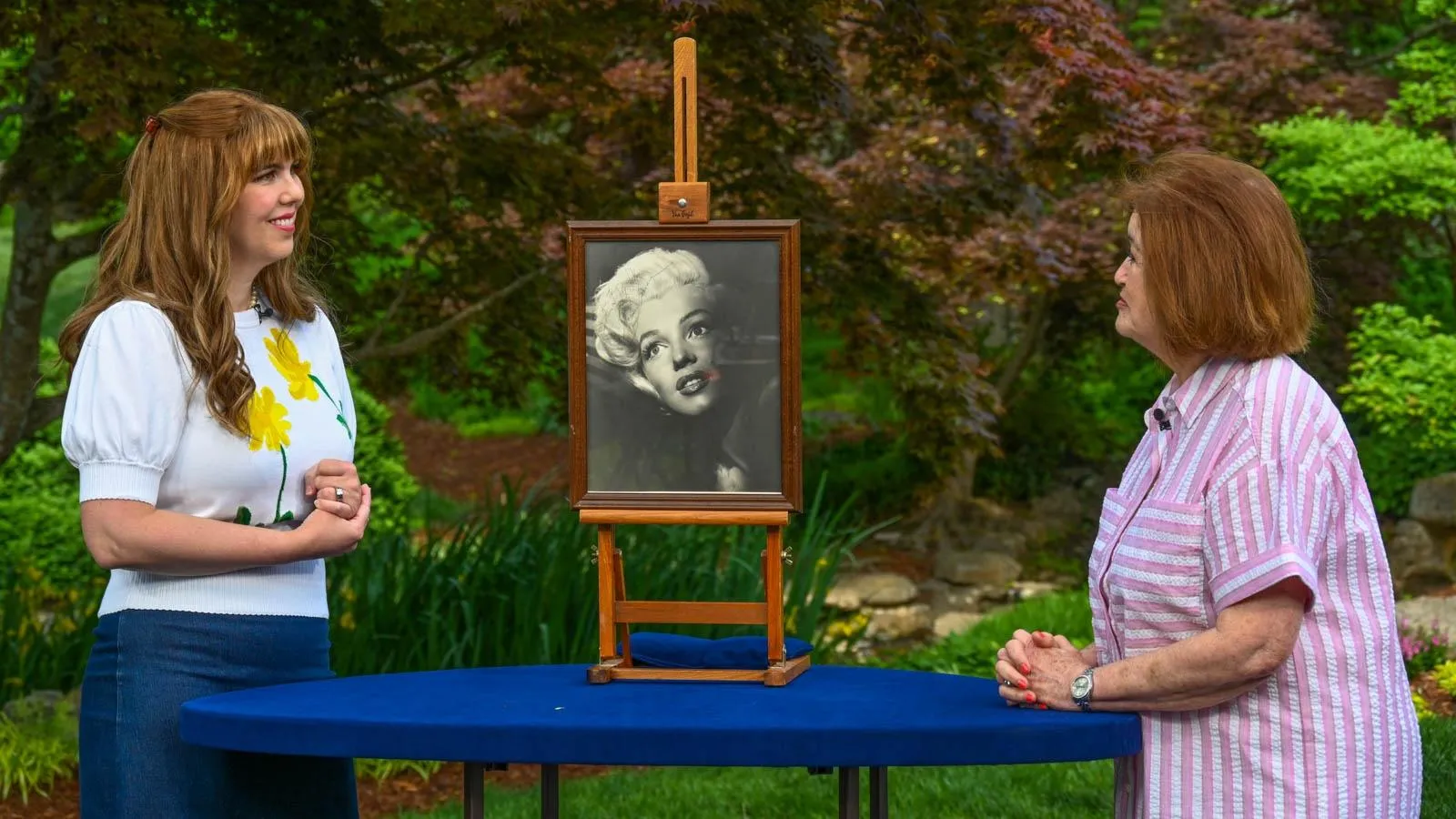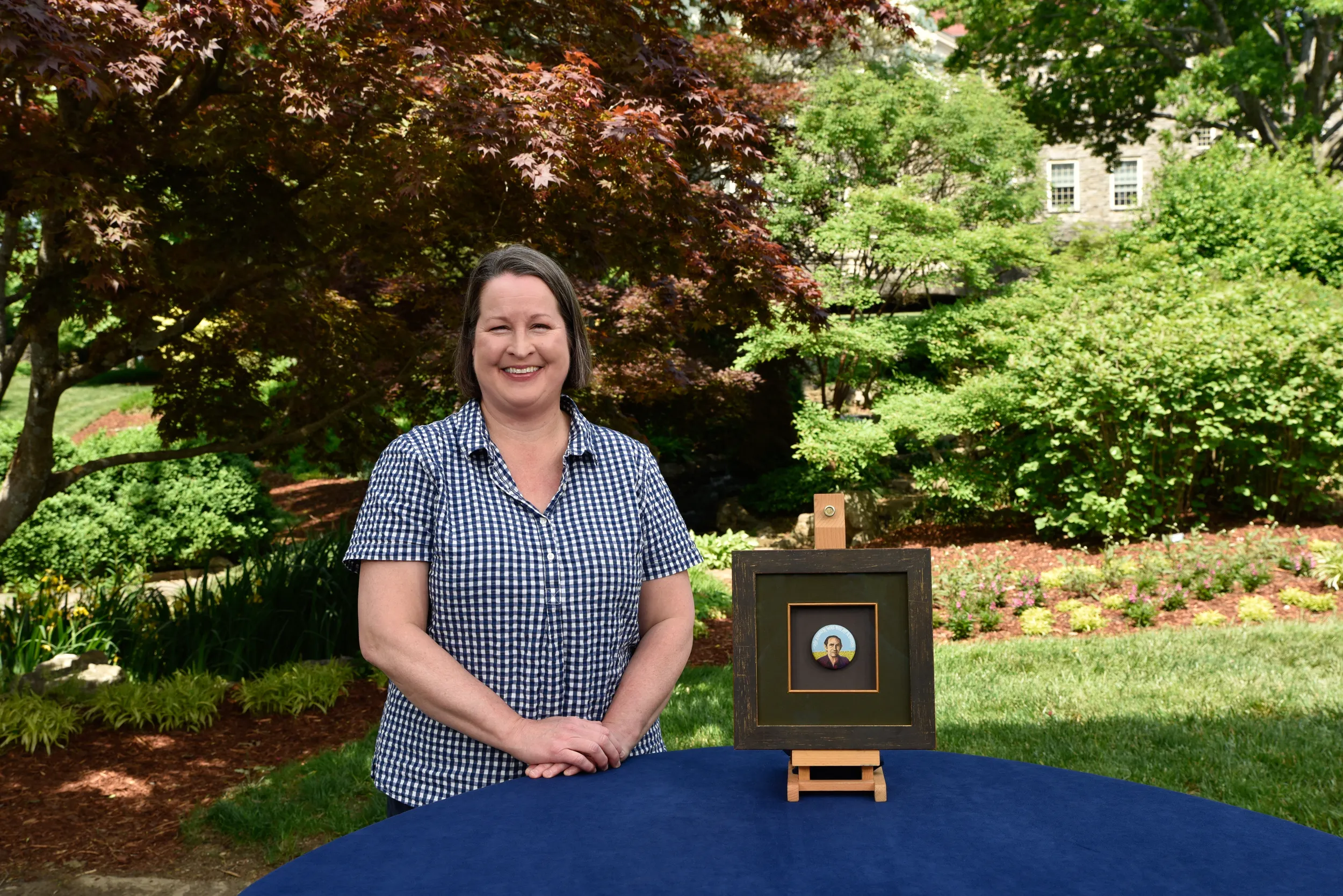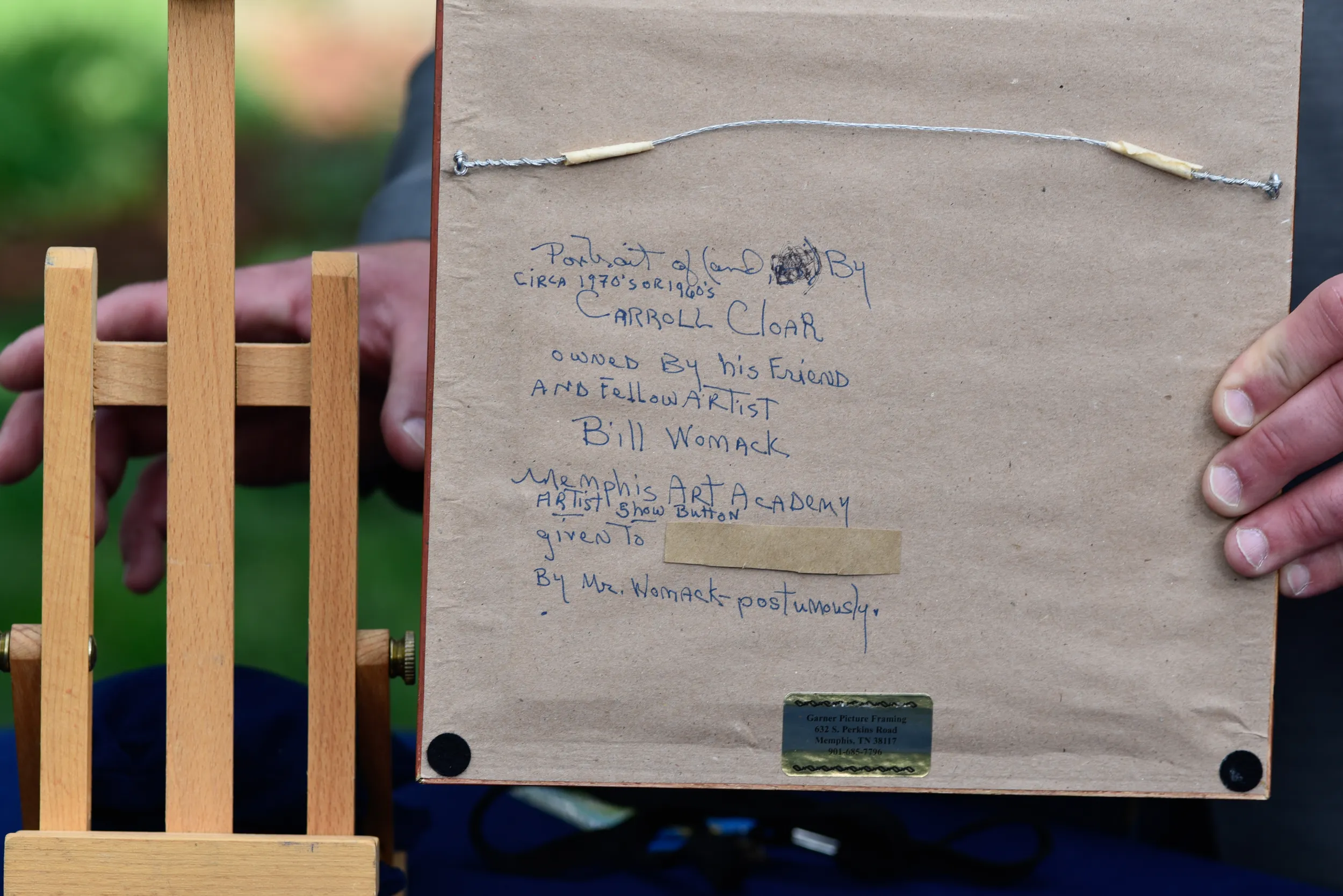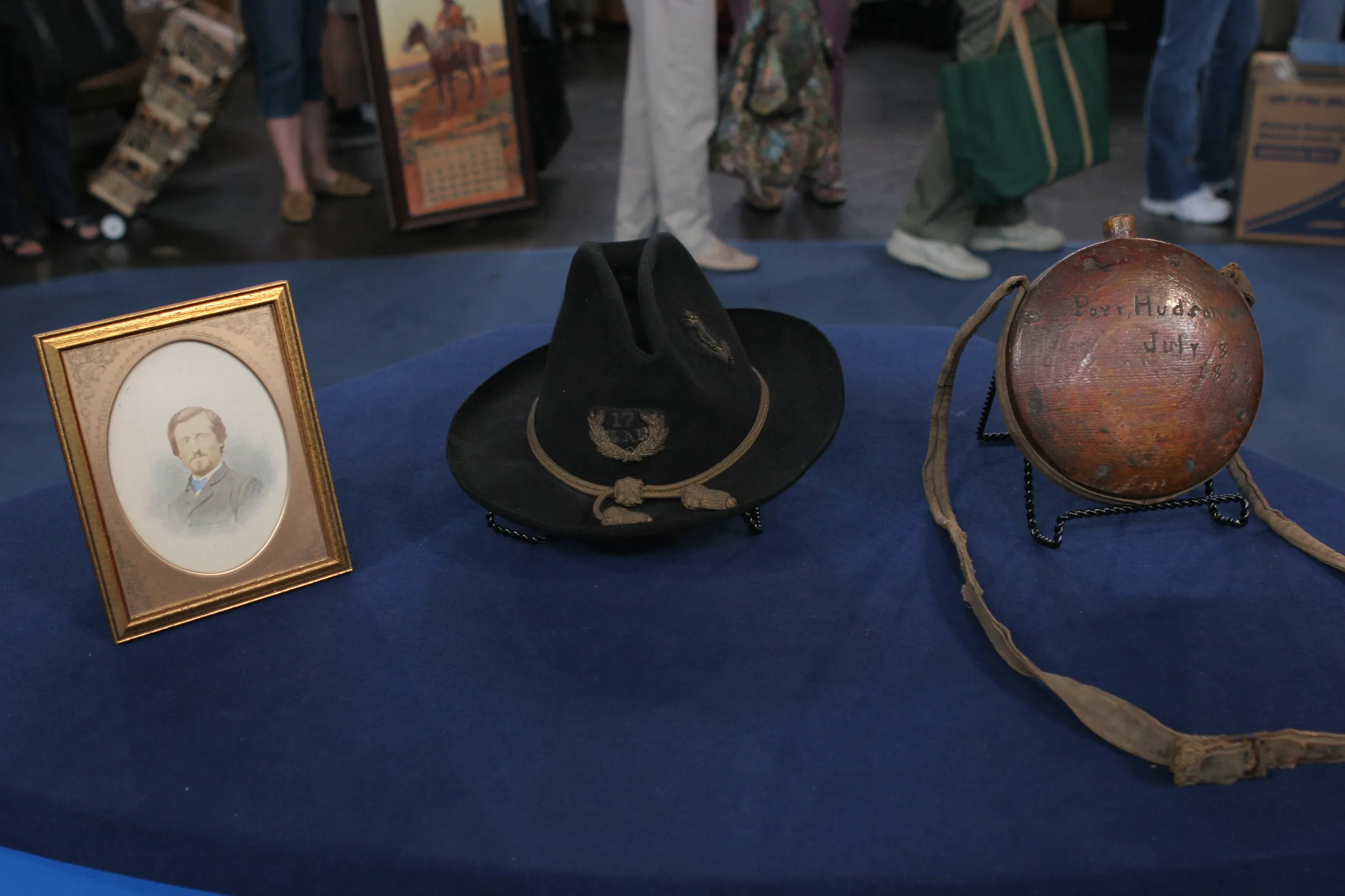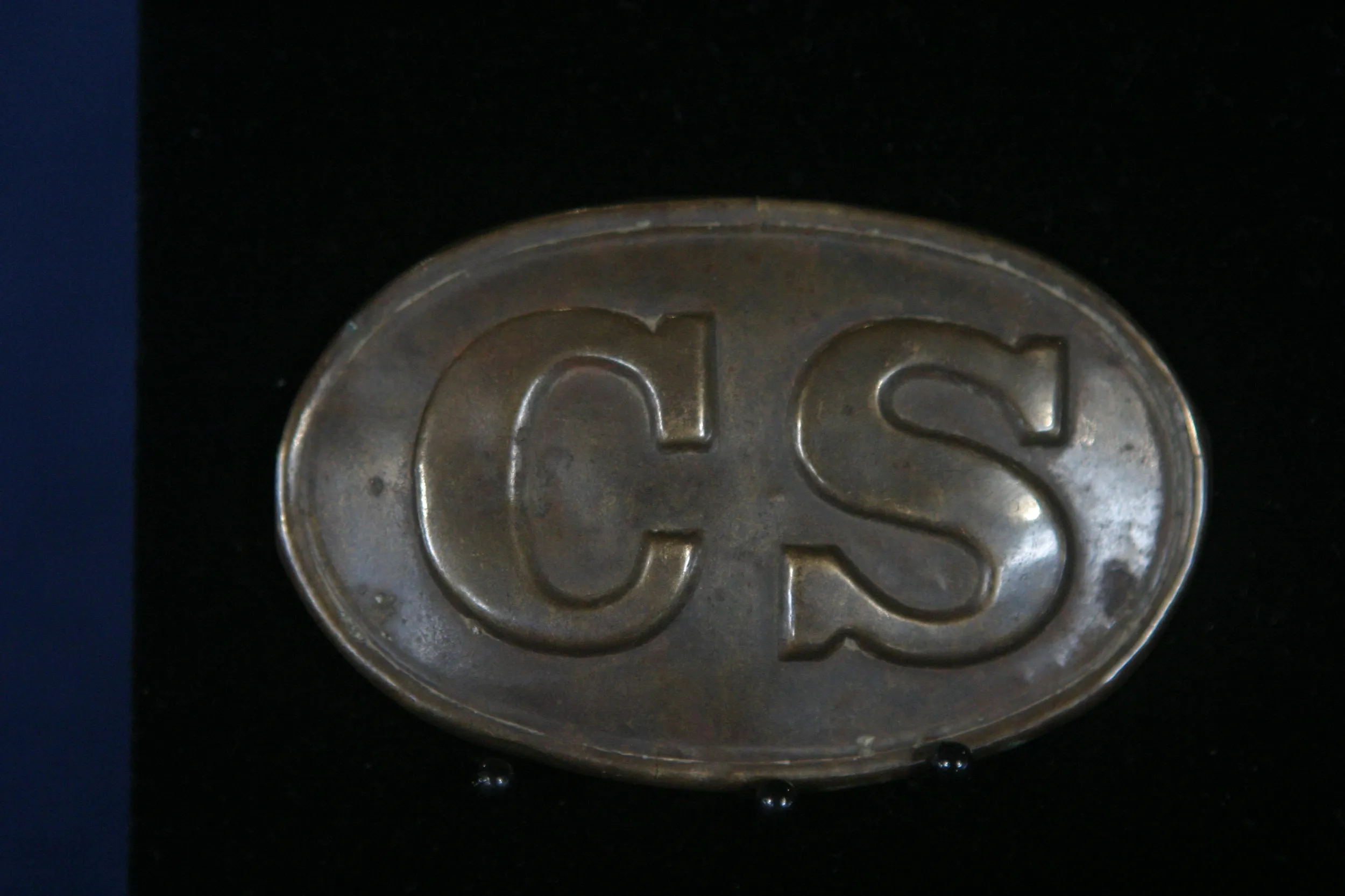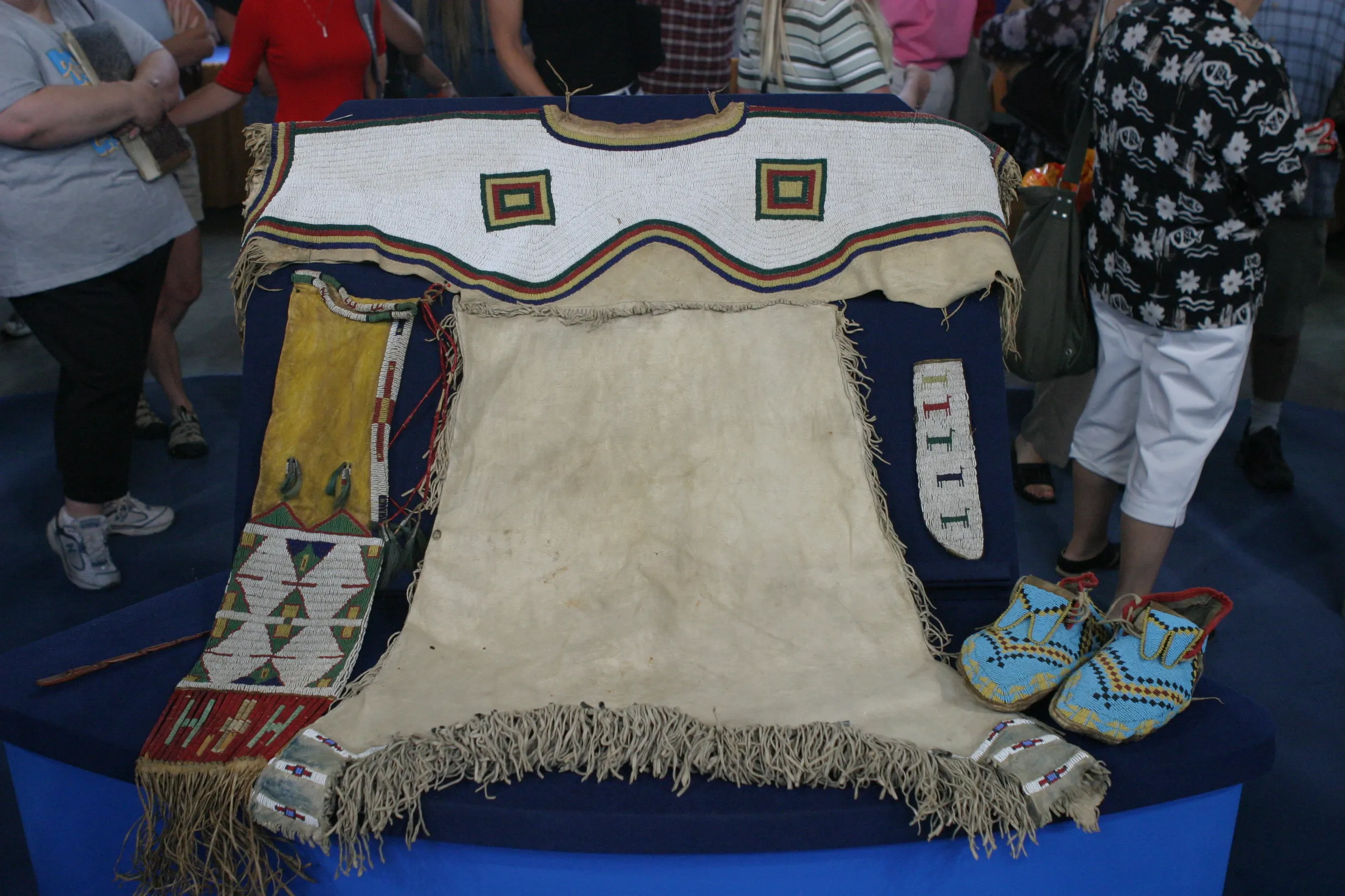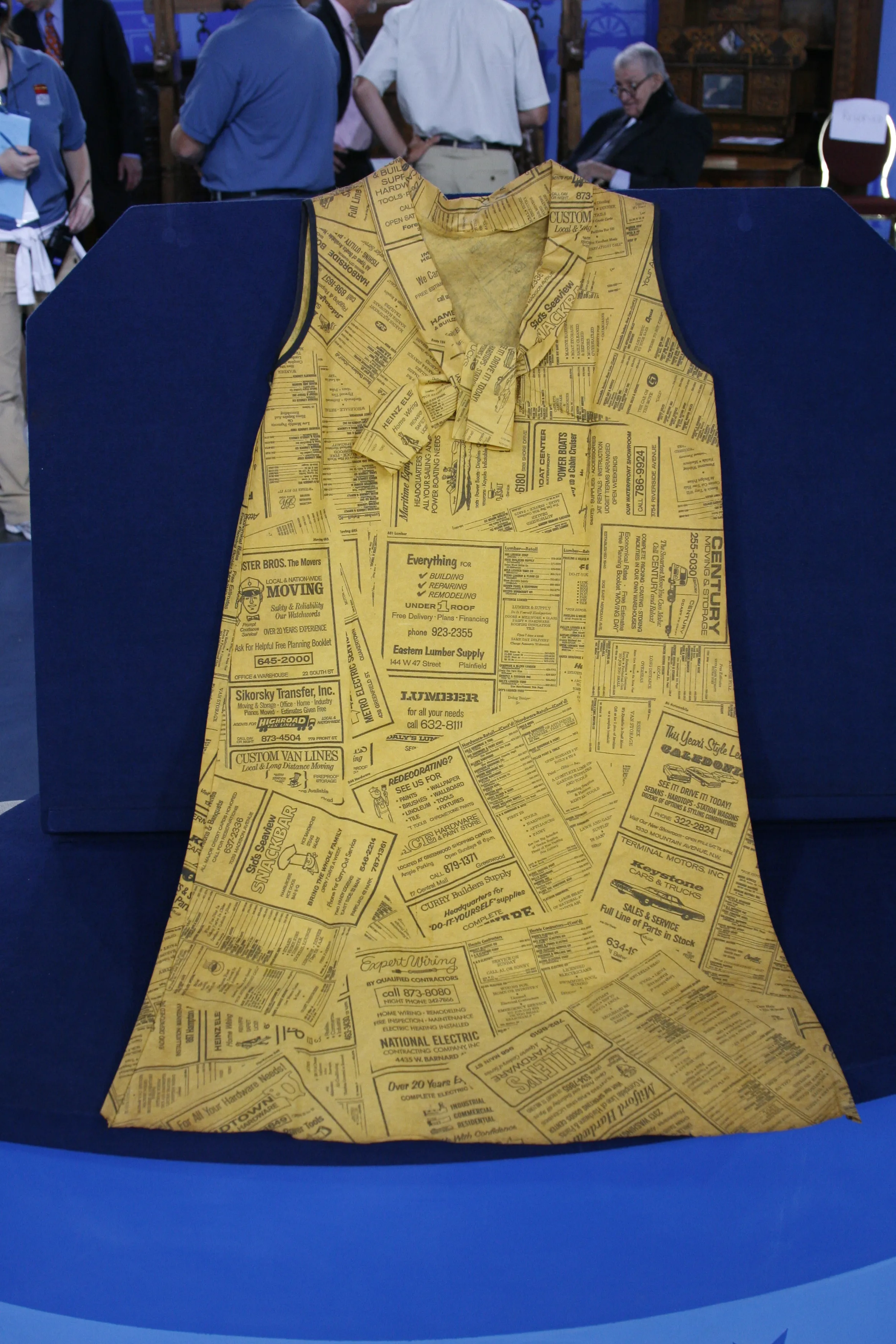GUEST: It's a painted button by an artist named Carroll Cloar. It came from my mother, she gave it to me, and she had acquired it from a neighbor, who acquired it from a friend of the artist.
APPRAISER: So your mom, was she a collector?
GUEST: She likes everything. And she's a great eye, so she just has a number of things. And this is one of the things I thought was fabulous. And so when she offered it, I said yes.
APPRAISER: Well, let's take a look at the back of the frame, because there's a pretty lengthy inscription there. And tell me about what you know about who might have written that.
GUEST: So that was definitely written by my mother. She has very distinct handwriting. I had asked her to write everything she knew about it so that I wouldn't forget.
APPRAISER: Yeah.
GUEST: And it says "Portrait of and by Carroll Cloar, circa 1970s or 1960s, owned by his friend and fellow artist Bill Womack. Memphis Art Academy artist show button given by Mr. Womack posthumously." Her neighbor was a friend of Mr. Womack, so that's my understanding of the path.
APPRAISER: Gotcha, okay.
GUEST: And so she didn't purchase it. It was given to her.
APPRAISER: I just love to have those personal anecdotal stories about a work of art. To me, it enhances its value sentimentally and, you know, financially.
GUEST: Absolutely.
APPRAISER: Because the more we know about, uh, a work like this, the more interested collectors are in our industry.
GUEST: Mm-hmm.
APPRAISER: Carroll Cloar, he's a Southern artist. He was born in 1913 in Earle, Arkansas. He went to the Art Students League in New York. But he really became well-known painting Southern subjects. So almost surrealist Southern subjects landscapes, and lots of subjects invoke memories of his childhood, of the South.
GUEST: Ah.
APPRAISER: Um, and so what's written on that button, can you read that for me?
GUEST: It says "My father was big as a button."
APPRAISER: Probably his most highly regarded work is in Memphis today.
GUEST: Oh.
APPRAISER: And the title of the painting was called My Father Was Big as a Tree.
GUEST: Oh, okay.
APPRAISER: And it was sort of an emotional subject. He's seated in a, a toy car, and his father's this imposing figure in the foreground of the painting...
GUEST: Oh.
APPRAISER: ...in front of a tree. So that series really propelled Cloar to the fame that he achieved in the 1950s. This is a self-portrait of the artist. It's hard to pin down exactly when it would have been executed, but in all likelihood, after 1955 sometime, when he produced My Father Was Big As A Tree. So this would have been painted in the '60s or the '70s. The medium is oil. It's an oil painted over a button. And it's done in his style of, almost imitative of the Pointillist painters. Generally, what you see from Cloar are anywhere from 20 by 30 inches to 30-by-50-inch oil-on-canvas paintings. This is a bit unusual in that it's in the form of a button. So do you have any perspective on how that might have came to be?
GUEST: So my understanding is that the button was created by him w, for him to wear during his show.
APPRAISER: He is a highly desirable painter, especially in this region. He is growing in demand, especially in the last decade or so. So while this is a bit unusual-- it's atypical for his, for his work...
GUEST: Mm-hmm.
APPRAISER: ...it still has a lot of bells and whistles that a collector might want.
GUEST: Mm-hmm.
APPRAISER: At auction, I would suggest that the value of this would fall in the $5,000 to $7,000 range.
GUEST: Oh, my gosh! That's amazing!
APPRAISER: (laughing)
GUEST (laughing): I'm, I'm not going to tell anybody else in my family.
(both laughing)
GUEST: That's fabulous!
APPRAISER: That is, until they see the show.
GUEST: Well...
(both laughing)
GUEST: Shh.
APPRAISER: His paintings recently...
GUEST: Mm-hmm.
APPRAISER: ...have started to sell in the region of $60,000 to $80,000.
GUEST: Oh, my gosh!
APPRAISER: Yeah.

